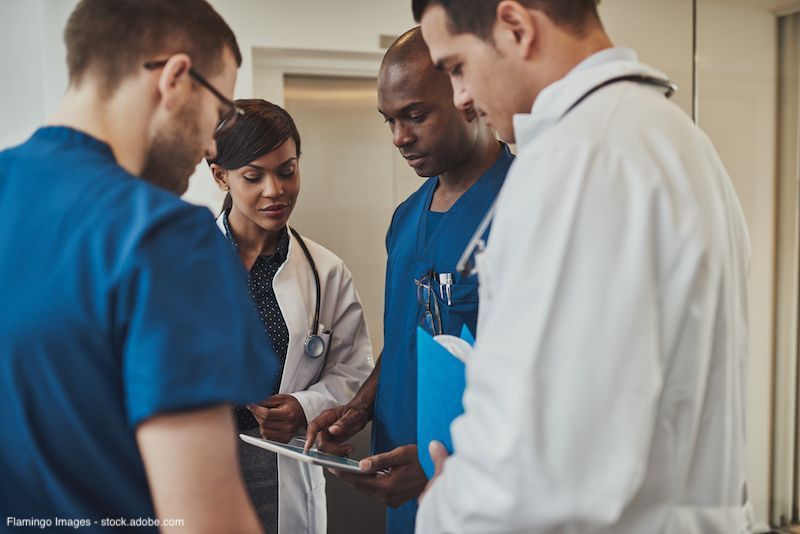Article
Urologic research and COVID-19: Unmasking the silver lining
Author(s):
In this column, the authors discuss how the coronavirus disease 2019 (COVID-19) shutdown yielded unexpected opportunities in urologic research.
In this blog post, Amy Pearlman, MD, Victoria Troesch, and Denise Juhr each discuss how the coronavirus disease 2019 (COVID-19) shutdown yielded unexpected opportunities. Pearlman is director of the Men’s Health Program and clinical assistant professor of urology, Troesch is a medical student, and Juhr is a research assistant at the University of Iowa, Iowa City.
Pearlman: COVID-19 put a standstill on my elective case volume, in-person community educational seminars, and drastically reduced my ability to engage with patients in person. My silver lining? Having the opportunity to build a research team that would have otherwise taken me years to form.
On March 6, 2020, I participated in a specialty fair for first-year medical students at my academic institution and gave the students a run-down of the field of urology. “Raise your hand if you are planning on doing research this summer,” I stated into the mic. The majority of students in the room raised their hands. “Raise your hand if you are still looking for a research project.” No hands were raised. “Alrighty, well reach out to me if you have any interest in working on research in the future” and I concluded my spiel.
Then, COVID-19 hit and our ability to engage with our learners and conduct research in person changed. Several students reached out to me via email, all with a similar message of, “I was supposed to work in so and so’s lab or travel internationally for outreach work and am no longer able to because of the pandemic. Do you have any projects for me?” My response, even when the list of projects became overwhelming, was the same: “Yes, let’s set up a call to discuss. Are you free tomorrow?”
My silver lining has given me the opportunity to work with a variety of learners, like medical student Victoria Troesch. Victoria has unmasked her own silver lining…
Troesch: COVID-19 put a standstill on my advanced surgical and urology rotations just days before they were set to start. My silver lining? Having the opportunity to dive head first into research that I am not sure I would have otherwise found time to complete, from start to finish.
In medical school, spare time for research is difficult to find in between clinical responsibilities, studying for exams, and volunteering. Under stay-at-home orders in California and virtual electives still in development, I was presented with a situation I hadn’t dealt with in years—what do I do with all of my excess time?
When COVID-19 hit, my ability to engage with staff physicians also changed. As their schedules also became less busy, many, like Amy, used their newfound time to devote to one-on-one professional mentorship and research guidance. I have grown tremendously over these last few months. I’ve developed confidence in my abilities to engage in meaningful research, from exploring ways to enroll participants via digital platforms, building and distributing online surveys, and learning the art and value of multi-institutional and multi-specialty collaboration.
Pearlman: My silver lining has also given me the opportunity to work with department staff members, like research assistant Denise Juhr.
Juhr: COVID-19 put a standstill on my ability to interact with research participants and collect samples as part of National Institutes of Health-funded work. My silver lining? Having the opportunity to organize previously collected data and engage in new research opportunities as a research investigator.
When the pandemic necessitated that I work remotely from home, I pondered what was going to happen to our ongoing clinical research trials, our participants, and our collaborators. I wondered if research would continue at all.
When COVID-19 hit, my ability to engage with staff physicians and learners also changed. I now had the time to engage with learners to help them navigate through the institutional review board process and utilize secure web applications for building and managing online databases. I worked with staff physicians, like Amy, and learners, like Victoria, to wade through the often tedious and difficult waters of designing and implementing prospective work. I’ve watched all members of the research team grow and, in the process, have learned innovative approaches to conducting research in the midst of a pandemic. I’ve embraced participant recruitment through social media platforms and online discussion boards. I’ve developed confidence in mentoring others.
Pearlman/Troesch/Juhr: COVID-19’s silver lining has allowed us to build relationships with learners, researchers, and staff physicians as we continue to ask the difficult research questions and discover innovative strategies for participant enrollment and engagement. You could say we’ve developed confidence in thinking outside the research box (and outside the mask).
















